The 9 elements / chakras / energy centers / gyus of nature and how they are understood and used within Ninjutsu for meditation, movement, combat, and … dancing?
Last Published: v7
In Ninjutsu, each of the 5 elements has meditation and form (kata). Each meditation uses a certain finger joined with the thumb (ether), and a certain method of breathing. Each form has certain posture, body part emphasized, movement method, strike method, and breath method.
Elements Imbalance
We all have all elements but imbalance happens when all elements are not equal to each other to cancel each other out (soul consciousness), which creates problems in personality therefore life therefore fate. The upper elements feed the lower elements (up to an extent afterwards consume them), while the lowers consume the upper elements. This is a lot like how elements in nature, plants, & animals (and even humans) feed to / consume from / depend on each other.
This imbalance of the elements of the mind influences the body too as shown by the 3 doshas (best understood as disease): tamasic as earth as kaffa as fat, rajasic as fire as pitta as fit, satvic as air as vatta as thin. This is also shown in Sheldon’s type identifier as earth as cerebretonic as ectomorph / thin, water as visceretonic as endomorph / fat, fire as somatotonic as mesomorph / fit.
Both together appear to represented in motion by Tenchijin’s Kihon Happo’s Koshi Sanpo (see below) since the hip posture (water element) of dosha is always there along with a kata for each of the 3 elements of Sheldon’s type identifier (earth, fire, water).
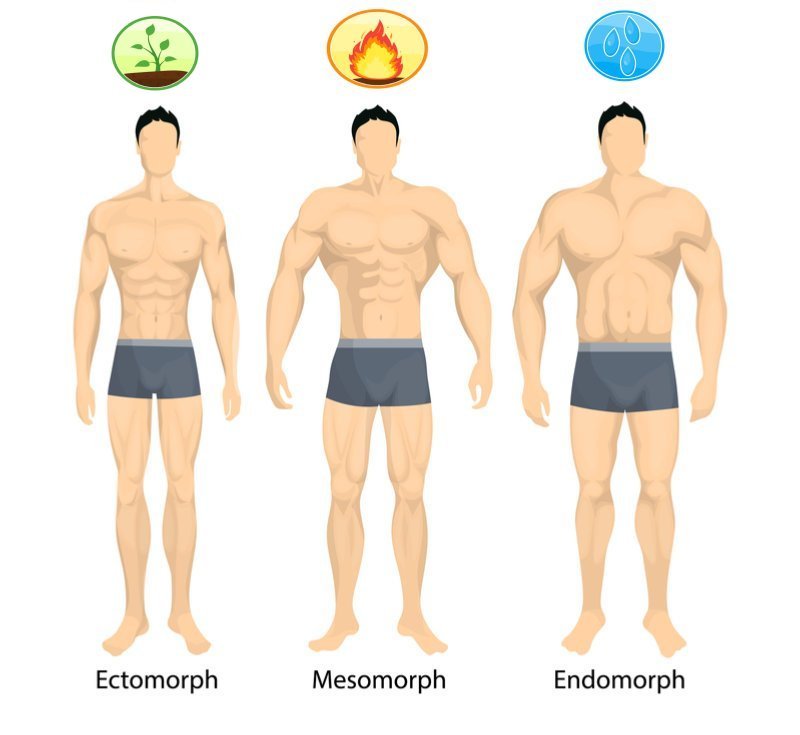
How mind’s elements influences one’s personality: https://nodojoninja.blogspot.com/2021/01/9elements.html at Elements v.s. Character.
Elements in Ninjutsu Application
1) Earth
- Japanese = chi
- still meditation
- 1) finger (from smallest) = 1st (pinky) joined with thumb
- 2) breath = slow in (nose), slow out (mouth)
- fighting form: (idea: limited space)
- 1) body part = knees
- 2) movement: slightly any direction by going down then up into it
- 3) strike / grapple: linear vertical
- 4) dominant posture: shizen
- 5) disposition: turn / stand your ground. This is in reflection of being aware of your surroundings including resources & community.
- breath = slow in (nose), slow out (mouth)
2) Water
- Japanese = sui
- still meditation
- 1) finger (from smallest) = 2nd (ring) joined with thumb
- 2) breath = slow in (nose), fast out (mouth)
- fighting form (lots of space)
- 1) body part = hips
- 2) movement: diagnoal (sayo / nanameh)
- 3) strike / grapple: circular diagonal
- 4) dominant posture: ichimonji
- 5) disposition: absorb. This is in reflection of adapting to the situation by taking advantage of the weaknesses that present themselves. This also is related to fun, humour, and partnership.
- breath = slow in (nose), fast out (mouth)
3) Fire
- Japanese = ka
- still meditation
- 1) finger (from smallest) = 3rd (middle)
- 2) breath = fast in (nose), fast out (mouth)
- fighting form (lots of space forward)
- 1) body part = torso
- 2) movement: forward & backward
- 3) strike / grapple: linear horizontal
- 4) dominant posture: jumonji
- 5) disposition: intercept / forward. This is in reflection of being prepared for problems before they happen, and attacking before being attacked. This is also related to confidence, exploration, experimentation, influence, leadership, and control.
- breath = fast in (nose), fast out (mouth)
4) Air
- Japanese = fu
- still meditation
- 1) finger (from smallest) = 4th (index) joined with thumb
- 2) breath = fast in (nose), slow out (mouth)
- fighting form (some space to sides)
- 1) body part = shoulders
- 2) movement: sideways
- 3) strike / grapple: circular turning
- 4) dominant posture: hiramonji
- 5) disposition: dissapear. This has a lot to do with oversight (philosophy). This is also related to selfless love and compassion.
- breath = fast in (nose), slow out (mouth)
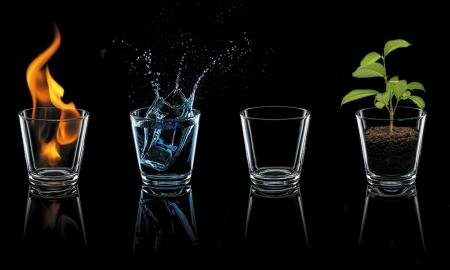
5) Ether
- Japanese = ku
- still meditation
- 1) finger (from smallest) = 5th (thumb)
- 2) breath = any
- fighting form: any
- 1) body part = any
- 2) movement: any
- 3) strike / grapple: circular / linear, usually involving surprise through deception or distraction
- 4) dominant posture: any
- 5) disposition: none (ether / void) / The 5th Element. This is in reflection of understanding natural thinking by looking beyond form into concept therefore being able to express & create from within.
- breath = any
Tenchijin’s Kihon Happo
Kihon: base
Happo: eight
2 sections: sanpo no kata (koshi kihon sampo) for striking, goho no kata (torite goho gata) for grappling. In Ten Chi Jin there appears to be just 8 movements for some reason, without linking any of the elements to them. In Takamatsu den, it’s basically any technique with 4 elements each with 2 postures / sides each making it a total of 8.
Sanpo No Kata (Koshi (Hip) Sanpo (Walk))
1) earth element via hicho monji no kata: go diagonally away into hicho deflecting down then to side via circular motion, immediately kicking up afterwards into arm pit, then shuto into throat. This is ideal for low attack.
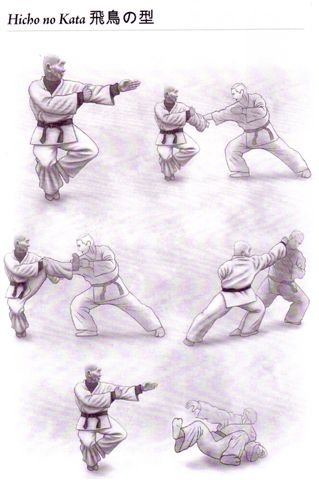
2) water element via ichimonji no kata: go inside defleting attacking arm so it goes in via absorption or out via strike then attack throat. This is ideal for medium attack.
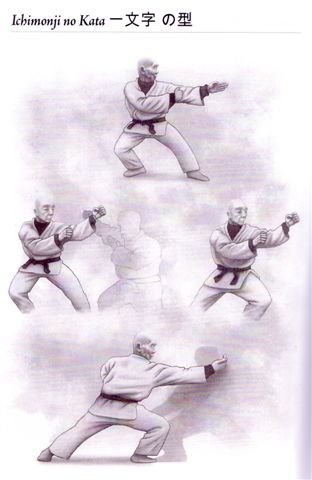
3) fire element via jumonji no kat: absorb attacking arm then invite to attack low by placing other hand up then down, with same closer absorbing hand then go for ribs then face. It can be to deflect then immediately attack the arm pit. This is ideal for high attack.
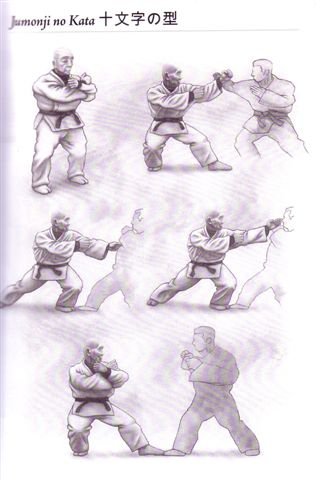
Goho No Kata (Torite (Receiver) Goho (5))
1) omote gyaku / outside twist (if attacker shirt grabs you then go inside to break balance then raise hand so opponent lowers, then move diagonally outside twisting wrist there).
2) omote gyaku tsuki / outside twist with punch (if attacker shirt grabs you then punches immediately) – cup the holding hand with opposite hand then turn inside & deflect punch simultaneously then go diagonally outside twisting wrist there.
3) ora gyaku / inside twist (if attacker shirt grabs you then you must go inside after breaking balance and shuto from outside).
4) mushadori (opponent elbow up after pressing down on the pit – a lot like oni kudaki) & musadori (opponent elbow down by pressing on elbow – like gensaki nage).

5) ganseki nage (plus sign turn to outside or inside, exactly like juji dori but throw – nage waza not gyaku waza).

You can see that Ninjutsu elements are not clear in Tenchijin program. You can learn the original Takamtsu Den kihon happo with me via a couple of $10 video contributions, or by joining a course (more info below).
Kuji (9)
The 9 hand cuts (kiri) and seals (in / mudras) are derived from esotoric Buddhist traditions of Shingon and Mikkyo. They are esotoric because their meditation practises, unlike in Zen Buddhism, are said to alter reality, which is interpreted as spell casting. However, like all Buddhist traditions, the real concern of esoteric sects is enlightenment, and these “spells” are intended to purify and focus the mind.
There are four more elements in Ninjutsu to enlightenment, all of which are represented by kuji. For this NLP (Neuro Linguistic Programming) to work, you should study the elements deeply; you may do so here & here. Visualize each element being bodied inside of you very clearly and with as much detail as possible.
The translation of the 9 elements in kuji is as mentioned in the 9 elements guide blog post is: earth / power (rin), water / energy (pyo), fire / harmony (to), air / healing (sha), ether / intuition (kai), awareness (jin), synchronicity (retso) , creation (zai), enlightenment (zen). Since they are said to aid in protection, they appear to be mantra / shingon (oral invocation to dieties from other dimensions).
1. Kuji Kiri (9 cuts)
Here the Ninjutsu elements are represented by 2 finger (representing unity / sword, and the rising element of fire & air) cut motions.
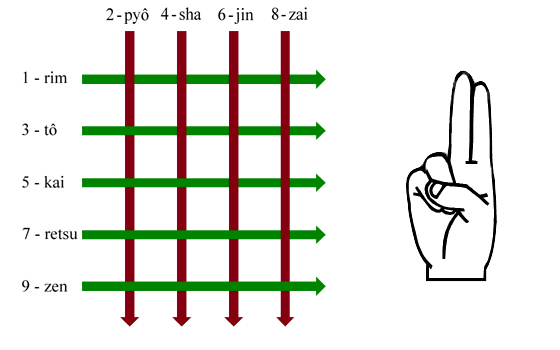
2. Kuji In (9 seals)
Here the Ninjutsu elements are represented by mudras (positions) of the fingers.
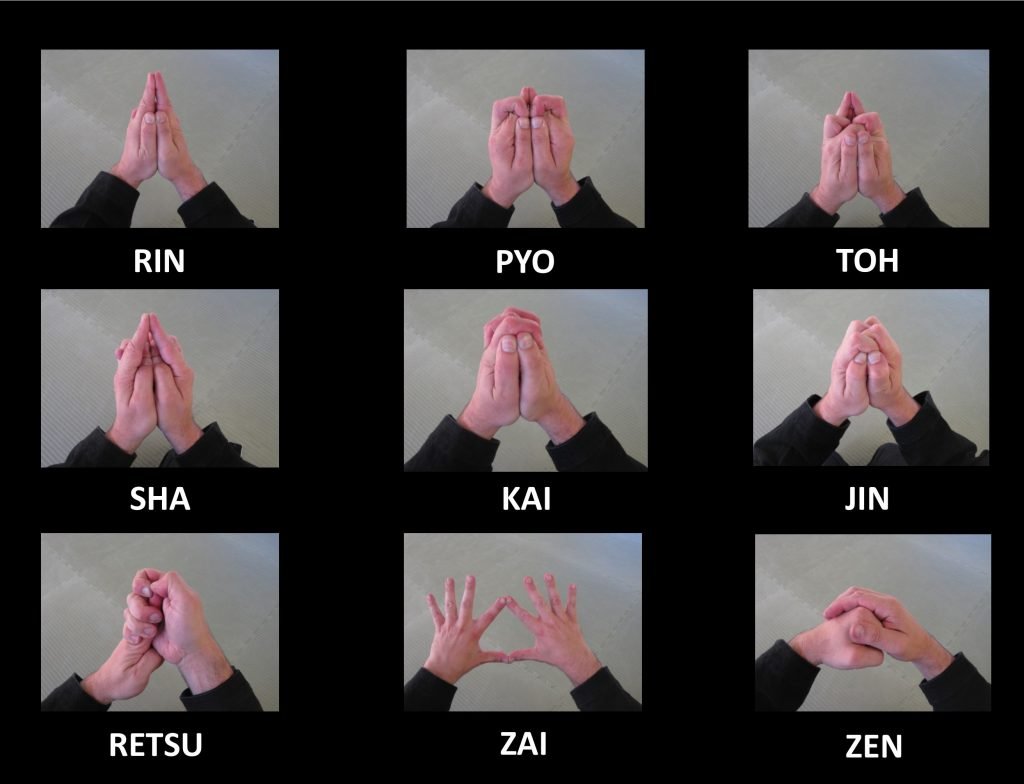
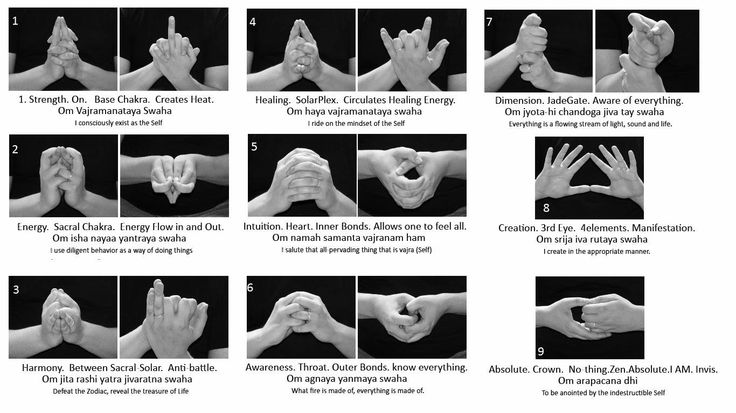
Online (& offline) updated, personalized, & guided video-based courses with weekly live-video feedback & community membership are available @ https://www.ko-fi.com/mowrow/commissions.
Remember to subscribe via the form below or on the right for updates & promotions!

